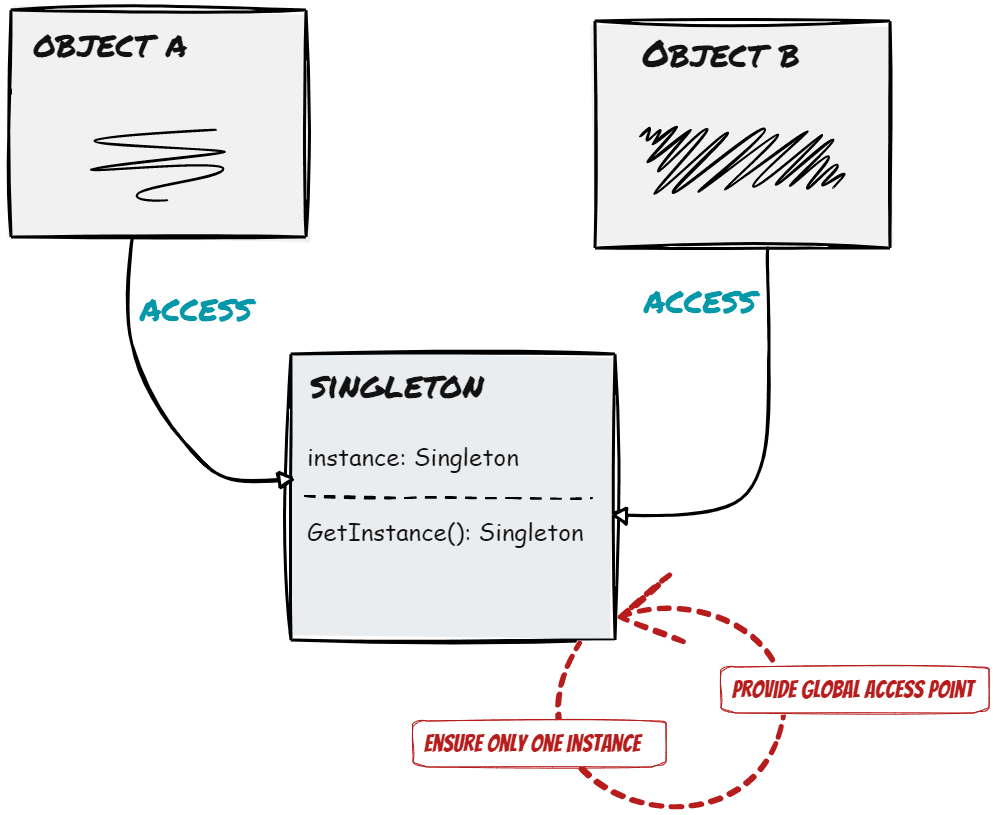Design patterns are essential to building robust software solutions, and one of the most widely used creational design patterns is the Singleton Pattern. This pattern ensures that a class has only one instance and provides a global point of access to that instance.
In this article, we will dive deep into the Singleton Design Pattern, understand the problems it solves, explore real-world industry use cases, and explain various types of Singleton implementations:
- Eager Initialization
- Lazy Initialization (Non-thread safe)
- Lazy Initialization (Thread-safe)
- Lazy Initialization with Double-Checked Locking
We’ll also discuss the pros and cons of this pattern, provide a class diagram, and highlight when (and when not) to use it in your projects.
The Singleton Pattern restricts the instantiation of a class to one object. This is particularly useful when you need to manage resources like database connections, logging, or thread pools where creating multiple instances can lead to resource wastage or inconsistent behavior.
-
Creational Design Pattern: This pattern belongs to the creational design patterns, which focus on object creation mechanisms. By ensuring only one instance of a class, it ensures control over resource usage.
-
Key Concept: A Singleton class only allows one instance throughout the application's lifecycle, and this instance can be accessed globally.
The Singleton Pattern solves several issues, especially related to resource management and consistency:
-
Global Access: Provides a single global point of access to the object, ensuring centralized management of resources like caches, configurations, or log files.
-
Controlled Resource Usage: In scenarios like a database connection pool, creating multiple instances can lead to high memory consumption and inconsistent states. Singleton ensures there’s only one shared instance.
-
Prevents Instability: In some systems, having multiple instances of a class could lead to errors, especially if objects represent shared resources or shared states.
The Singleton Design Pattern is commonly used in scenarios where resource-intensive objects, like configurations, databases, or logging systems, need controlled and centralized access.
-
Configuration Settings: In applications where system configurations need to be accessed globally, a Singleton is used to maintain a single instance of these settings.
-
Logger: Most logging frameworks implement a Singleton to ensure that all parts of an application use the same logging instance, preventing the creation of multiple logger instances.
-
Connection Pooling: Database connection pools often use the Singleton pattern to control access to a fixed number of connections, ensuring that only one instance of the pool exists.
Making the constructor private ensures that no other class can instantiate the Singleton class. This is critical because the entire point of the Singleton is to have a single instance, which would be violated if the constructor were public.
To visualize the Singleton Design Pattern, here’s a simple class diagram you can view:
- Controlled Resource Usage: It ensures that only one instance of a resource-heavy object is created.
- Global Access: Provides a single point of access to the instance, which can be easily shared across the application.
- Thread Safety: Some implementations like Double-Checked Locking handle concurrency issues effectively.
- Global State: Overuse of Singleton can lead to global state management issues, making testing and debugging harder.
- Tight Coupling: Classes using Singleton can become tightly coupled to the Singleton instance, reducing modularity and flexibility.
- Difficult to Test: Testing Singleton-based classes is often more challenging due to the need to ensure a clean state across tests.
The Singleton Design Pattern is an essential tool in software development, particularly for resource management and ensuring consistent behavior across an application. However, its implementation must be handled with care, especially in multi-threaded environments, where thread safety is crucial. By understanding and using this pattern appropriately, developers can avoid common pitfalls and create efficient, scalable solutions.

